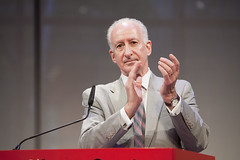Violence at Rikers Out of Control
This month, Graham Rayman of the Village Voice continued his hard-hitting investigation of unchecked violence at Rikers. Be advised, the photos of inmate injuries that he obtained are horrific. The Voice published these images in the hopes of shocking New Yorkers and their elected officials out of complacency regarding conditions at the prison.
In 2008, the Voice exposed a “fight club” for teen prisoners which operated with the support of guards, who used inmate-on-inmate violence to keep order. Two correctional officers went to prison for their role in the fights, know as The Program.
Rikers officials say that the Program is no more, but insiders tell Rayman a different story:
However, several sources, including current and retired investigators, say that the practice is very much still in place, which is backed up by hundreds of internal Correction Department documents obtained by the Voice.
The documents also lay bare the extreme influence that gangs, mostly Bloods, still exert on day-to-day life in the jails—particularly at the Robert N. Davoren Center, where teens are housed and where Robinson was murdered three years ago.
Documents show that inmate leaders known as “the team” control access to the phones; extort phone privileges, commissary allowances, and food from weaker inmates; and even enforce rules on where inmates can sit when watching television in the dayroom. The weakest inmates have to sit on the floor. All of this happens right under the noses of Correction officers.
Inmates at the juvenile detention center have sustained 10 broken jaws, 6 broken noses, and 3 shattered eye sockets in 2012, according to serious injury reports obtained by The Voice. The real numbers may be much higher, because not all injured inmates seek treatment in jail. Rayman estimates that over 4000 teens are injured every year at Rikers, and that the majority of those injuries are from violence.









